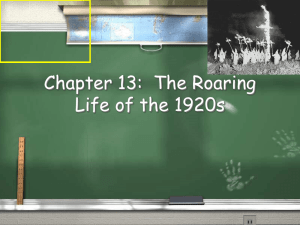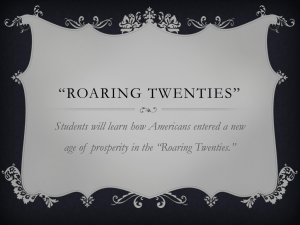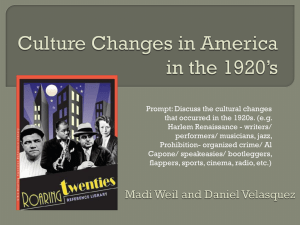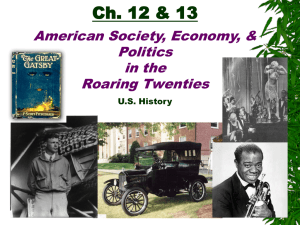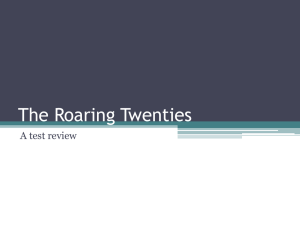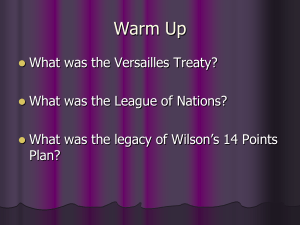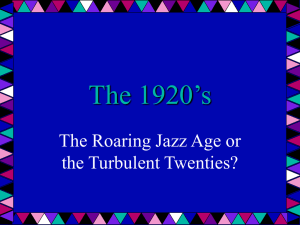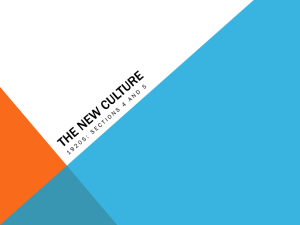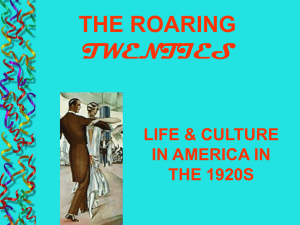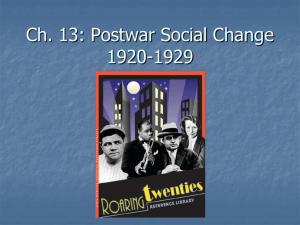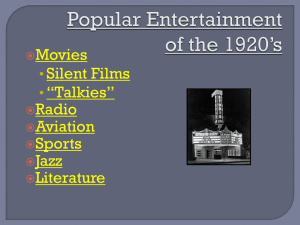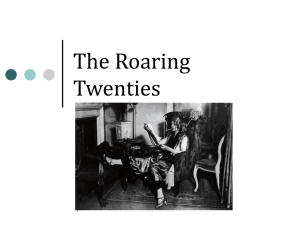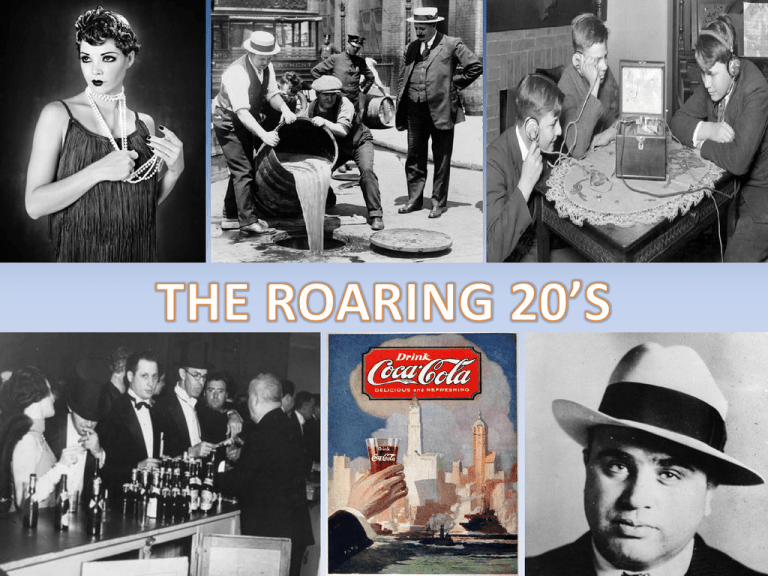
1. What is communism?
Fear Of Communism
One perceived threat to American life was the spread of communism, an
economic and political system based on a single-party
government ruled by a dictatorship. In order to equalize wealth and
power, Communists would put an end to private property, substituting
government ownership of factories, railroads, and other businesses.
2. During the Red Scare, what were U.S. citizens afraid of happening?
THE RED SCARE
The panic in the United States began in 1919, after revolutionaries in Russia overthrew
the czarist regime. Vladimir I. Lenin and his followers, or Bolsheviks (“the majority”),
established a new Communist state. Waving their symbolic red flag, Communists, or
“Reds,” cried out for a worldwide revolution that would abolish capitalism everywhere.
A Communist Party formed in the United States. Seventy-thousand radicals joined,
including some from the Industrial Workers of the World (IWW). When several dozen
bombs were mailed to government and business leaders, the public grew fearful that the
Communists were taking over. U.S. Attorney General A. Mitchell Palmer took action to
combat this "Red Scare."
3. Who did Attorney General A. Mitchell Palmer believe he needed to protect the
American people from?
THE PALMER RAIDS
In August 1919, Palmer appointed J. Edgar Hoover as his special assistant. Palmer,
Hoover, and their agents hunted down suspected Communists, socialists,
and anarchists –people who opposed any form of government. They trampled
people's civil rights, invading private homes and offices and jailing suspects without
allowing them legal counsel. Hundreds of foreign-born radicals were deported
without trials.
But Palmer's raids failed to turn up evidence of a revolutionary conspiracy—or even
explosives. Many thought Palmer was just looking for a campaign issue to gain
support for his presidential aspirations. Soon, the public decided that Palmer didn't
know what he was talking about.
4. Nicola Sacco and Bartolomeo Vanzetti were charged with, and convicted of?
SACCO AND VANZETTI
Although short-lived, the Red Scare fed people's suspicions of foreigners and immigrants.
This nativist attitude led to ruined reputations and wrecked lives. The two most famous
victims of this attitude were Nicola Sacco and Bartolomeo Vanzetti, a shoemaker and a
fish peddler. Both were Italian immigrants and anarchists; both had evaded the draft
during World War I.
In May 1920, Sacco and Vanzetti were arrested and charged with the robbery and
murder of a factory paymaster and his guard in South Braintree, Massachusetts.
Witnesses had said the criminals appeared to be Italians. The accused asserted their
innocence and provided alibis; the evidence against them was circumstantial; and the
presiding judge made prejudicial remarks. Nevertheless, the jury still found them guilty
and sentenced them to death..The two men died in the electric chair on August 23, 1927.
Before he was executed, Vanzetti made a statement.
5. Who did the Ku Klux Klan recruit to be members?
THE KLAN RISES AGAIN
As a result of the Red Scare and anti-immigrant feelings, different groups of bigots used
anti-communism as an excuse to harass any group unlike themselves. One such group
was the Ku Klux Klan (KKK). The KKK was devoted to “100 percent Americanism.” By
1924, KKK membership reached 4.5 million “white male persons, native-born gentile
citizens.” The Klan also believed in keeping blacks “in their place,” destroying saloons,
opposing unions, and driving Roman Catholics, Jews, and foreign-born people out of the
country. KKK members were paid to recruit new members into their world of secret
rituals and racial violence. Though the Klan dominated state politics in many states, by
the end of the decade its criminal activity led to a decrease in power.
6. The Teapot Dome scandal centered around___________?
SCANDAL HITS HARDING’S ADMINISTRATION
Harding’s cabinet members included the so-called
Ohio gang, the president's poker-playing buddies,
who would soon cause him a great deal of
embarrassment.
Harding's administration began to unravel as his
corrupt friends used their offices to become wealthy
through graft. Charles R. Forbes, the head of the
Veterans Bureau, was caught illegally selling
government and hospital supplies to private
companies. Colonel Thomas W. Miller, the head of the
Office of Alien Property, was caught taking a
bribe. The most spectacular example of corruption
was the Teapot Dome scandal. The government had
set aside oil-rich public lands at Teapot Dome,
Wyoming for use by the U.S. Navy. Secretary of the
Interior Albert B. Fall, managed to get the oil reserves
transferred from the navy to the Interior Department.
Then, Fall secretly leased the land to two private oil
companies. He was later found guilty of bribery and
became the first American to be convicted of a felony
while holding a cabinet post.
7. What invention contributed the most to urban sprawl?
THE IMPACT OF THE AUTOMOBILE
The automobile literally changed the American landscape. Its most visible effect was the
construction of paved roads suitable for driving in all weather. One such road was the
legendary Route 66, which provided a route for people trekking west from Chicago to
California. The automobile also launched the rapid construction of gasoline stations, repair
shops, public garages, motels, tourist camps, and shopping centers.
The automobile liberated the isolated rural family, who could now travel to the city for
shopping and entertainment. It also gave families the opportunity to vacation in new and
faraway places. It allowed both women and young people to become more independent
through increased mobility. It allowed workers to live miles from their jobs, resulting
in urban sprawl as cities spread in all directions.
8. What invention transformed the nation in the 1920’s?
AMERICA’S STANDARD OF LIVING SOARS
The years from 1920 to 1929 were prosperous ones for the United States. Americans
owned around 40 percent of the world's wealth, and that wealth changed the way
most Americans lived. The average annual income rose more than 35 percent during
the period—from $522 to $705. People found it easy to spend all that extra income
and then some.
Gasoline powered much of the economic boom of the 1920s, but the use of
electricity also transformed the nation. American factories used electricity
to run their machines. The number of electrified households grew, although
most farms still lacked power.
By the end of the 1920s, more and more homes had electric irons, while well-to-do
families used electric refrigerators, cooking ranges, and toasters.
9. What did companies create in the 1920’s to sell their products?
THE DAWN OF MODERN ADVERTISING
With new goods flooding the market, advertising agencies no longer just informed the
public about products and prices. Now they hired psychologists to study how to appeal
to people's desire for youthfulness, beauty, health, and wealth. Results were
impressive. Brand names became familiar from coast to coast, and luxury items now
seemed like necessities.
10. What was the installment plan?
A SUPERFICIAL PROSPERITY
During the 1920s, most Americans believed prosperity would go on forever
In addition to advertising, industry provided another solution to the problem of luring
consumers to purchase the mountain of goods produced each year: easy credit, or "a
dollar down and a dollar forever."The installment plan, as it was then called, enabled
people to buy goods over an extended period, without having to put down much money
at the time of purchase.
Some economists and business owners worried that installment buying might be getting
out of hand and that it was really a sign of fundamental weaknesses of a superficial
economic prosperity.
11. Why was it difficult to enforce the laws governing prohibition?
THE PROHIBITION EXPERIMENT
The Eighteenth Amendment went into effect. This amendment launched the era
known as Prohibition, during which the manufacture, sale, and transportation of
alcoholic beverages were legally prohibited.
At first, saloons closed their doors, and arrests for drunkenness declined. But in the
aftermath of World War I, many Americans were tired of making sacrifices; they
wanted to enjoy life. Most immigrant groups did not consider drinking a sin but a
natural part of socializing, and they resented government meddling. Eventually,
Prohibition's fate was sealed by the government, which failed to budget enough
money to enforce the law.
12. To obtain liquor illegally, drinkers went underground to hidden nightclubs known as
SPEAKEASIES AND BOOTLEGGERS
To obtain liquor illegally, drinkers went underground to hidden saloons and nightclubs
known as speakeasies —so called because when inside, one spoke quietly, or “easily,” to
avoid detection. Speakeasies could be found everywhere—in penthouses, cellars, office
buildings, rooming houses, tenements, hardware stores, and tearooms. To be admitted to
a speakeasy, one had to present a card or use a password. Inside, one would find a mix of
fashionable middle-class and upper-middle-class men and women.
People also bought liquor from bootleggers(named for a smuggler's practice of carrying
liquor in the legs of boots), who smuggled it in from Canada, Cuba, and the West Indies.
“The business of evading [the law] and making a mock of it has ceased to wear any
aspects of crime and has become a sort of national sport,” wrote the journalist H. L.
Mencken.
13. What unexpected consequence came about because of prohibition?
ORGANIZED CRIME
Prohibition not only generated disrespect for the law, it also contributed to organized
crime in nearly every major city. Chicago became notorious as the home of Al Capone, a
gangster whose bootlegging empire netted over $60 million a year. Capone took control
of the Chicago liquor business by killing off his competition. During the 1920s, headlines
reported 522 bloody gang killings and made the image of flashy Al Capone part of the
folklore of the period. In 1940, the writer Herbert Asbury recalled the Capone era in
Chicago.
By the mid-1920s, only 19 percent of Americans supported Prohibition. The rest, who
wanted the amendment changed or repealed, believed that Prohibition caused worse
effects than the initial problem. Rural Protestant Americans, however, defended a law
that they felt strengthened moral values. The Eighteenth Amendment remained in force
until 1933, when it was repealed by the Twenty-first Amendment.
14. John T. Scopes challenged which Tennessee law?
THE SCOPES TRIAL
In March 1925, Tennessee passed the nation's first law
that made it a crime to teach evolution. John T.
Scopes, a young biology teacher in Dayton, Tennessee,
read to his class this passage from Civic Biology: “We
have now learned that animal forms may be arranged
so as to begin with the simple one-celled forms and
culminate with a group which includes man himself.”
Scopes was promptly arrested, and his trial was
set The ACLU hired Clarence Darrow, the most
famous trial lawyer of the day, to defend Scopes.
William Jennings Bryan, three-time Democratic
candidate for president and a devout fundamentalist,
served as a special prosecutor. The Scopes trial was a
fight over evolution and the role of science and
religion in public schools and in American society.
Scopes was found guilty and fined $100. The
Tennessee Supreme Court later changed the verdict
on a technicality, but the law outlawing the teaching
of evolution remained in effect.
15. What was a flapper?
THE FLAPPER
During the twenties, a new ideal emerged for some women: the flapper, an
emancipated young woman who embraced the new fashions and urban attitudes of the
day. Close-fitting felt hats, bright waistless dresses an inch above the knees, skin-toned
silk stockings, sleek pumps, and strings of beads replaced the dark and prim anklelength dresses, whalebone corsets, and petticoats of Victorian days. Young women
clipped their long hair into boyish bobs and dyed it jet black.
Many young women became more assertive. In their bid for equal status with men,
some began smoking cigarettes, drinking in public, and talking openly about sex—
actions that would have ruined their reputations not many years before. They danced
the fox trot, camel walk, tango, Charleston, and shimmy with abandon.
Attitudes toward marriage changed as well.
Many middle-class men and women began
to view marriage as more of an equal
partnership, although both agreed that
housework and child-rearing remained a
woman's job.
16. What new thing did radio introduce to the masses?
RADIO COMES OF AGE
Although major magazines and newspapers reached big audiences, radio was the
most powerful communications medium to emerge in the 1920s. Americans added
terms such as “airwaves,” “radio audience,” and “tune in” to their everyday speech.
By the end of the decade, the radio networks had created something new in the
United States—the shared national experience of hearing the news as it happened.
The wider world had opened up to Americans, who could hear the voice of their
president or listen to the World Series live.
17. What was Charles Lindbergh famous for?
LINDBERGH'S FLIGHT
America's most beloved hero of the time wasn't an athlete but a small-town pilot
named Charles A. Lindbergh, who made the first nonstop solo flight across the Atlantic.
A handsome, modest Minnesotan, Lindbergh decided to go after a $25,000 prize
offered for the first nonstop solo transatlantic flight. On May 20, 1927, he took off near
New York City in the Spirit of St. Louis, flew up the coast to Newfoundland, and headed
over the Atlantic. After 33 hours and 29 minutes, Lindbergh set down at Le Bourget
airfield outside of Paris, France, amid beacons, searchlights, and mobs of enthusiastic
people.
Paris threw a huge party. On his return to the U.S., New York showered Lindbergh with
ticker tape, the president received him at the White House, and America made him its
idol.
18. What did F. Scott Fitzgerald described the 1920s as?
WRITERS OF THE 1920s
The 1920s also brought an outpouring of fresh and insightful writing, making it one of
the richest eras in the country's literary history.
Sinclair Lewis, the first American to win a Nobel Prize in literature, was among the
era's most outspoken critics. In his novel Babbitt, Lewis used the main character of
George F. Babbitt to ridicule Americans for their conformity and materialism.
It was F. Scott Fitzgerald who coined the term “Jazz Age” to describe the 1920s. In This
Side of Paradise and The Great Gatsby, he revealed the negative side of the period's
gaiety and freedom, portraying wealthy and attractive people leading imperiled lives
in gilded surroundings.
Ernest Hemingway, wounded in World War I, became the best-known expatriate
author. In his novels The Sun Also Rises and A Farewell to Arms, he criticized the
glorification of war.
19. What was The Harlem Renaissance?
HARLEM RENAISSANCE FLOWERS IN NEW YORK
Many African Americans who migrated north moved to Harlem, a neighborhood on the
Upper West Side of New York's Manhattan Island. In the 1920s, Harlem became the
world's largest black urban community, with residents from the South, the West Indies,
Cuba, Puerto Rico, and Haiti. James Weldon Johnson described Harlem as the capital of
black America.
Like many other urban neighborhoods, Harlem suffered from overcrowding,
unemployment, and poverty. But its problems in the 1920s were eclipsed by a flowering
of creativity called the Harlem Renaissance, a literary and artistic movement
celebrating African-American culture.
20. What did Marcus Garvey encourage African Americans to do?
MARCUS GARVEY AND THE UNIA
Although many African Americans found their voice in the NAACP, they still faced daily
threats and discrimination. Marcus Garvey, an immigrant from Jamaica, believed that
African Americans should build a separate society. His different, more radical message
of black pride aroused the hopes of many.
In 1914, Garvey founded the Universal Negro Improvement Association (UNIA). In
1918, he moved the UNIA to New York City and opened offices in urban ghettos in
order to recruit followers. Garvey encouraged his followers to return to Africa, help
native people there throw off white colonial oppressors, and build a mighty nation. His
idea struck a chord in many African Americans, as well as in blacks in the Caribbean and
Africa. Despite the appeal of Garvey's movement, support for it declined in the mid1920s, when he was convicted of mail fraud and jailed. Although the movement
dwindled, Garvey left behind a powerful legacy of newly awakened black pride,
economic independence, and reverence for Africa.
21. What did Claude McKay’s poems express?
AFRICAN–AMERICAN WRITERS
Above all, the Harlem Renaissance was a literary movement
led by well-educated, middle-class African Americans who
expressed a new pride in the African-American experience.
They celebrated their heritage and wrote with defiance and
poignancy about the trials of being black in a white world. W.
E. B. Du Bois and James Weldon Johnson helped these young
talents along, as did the Harvard-educated former Rhodes
scholar Alain Locke.
Claude McKay, a novelist, poet, and Jamaican immigrant,
was a major figure whose militant verses urged African
Americans to resist prejudice and discrimination. His poems
also expressed the pain of life in the black ghettos and the
strain of being black in a world dominated by whites.
Missouri-born Langston Hughes was the movement's bestknown poet. Many of Hughes's 1920s poems described the
difficult lives of working-class African Americans. Some of his
poems moved to the tempo of jazz and the blues.
22. Name two famous Jazz musicians
AFRICAN AMERICANS AND JAZZ
Jazz was born in the early 20th century in New Orleans, where musicians blended
instrumental ragtime and vocal blues into an exuberant new sound. In 1918, Joe “King”
Oliver and his Creole Jazz Band traveled north to Chicago, carrying jazz with them. In
1922, a young trumpet player named Louis Armstrong joined Oliver's group, which
became known as the Creole Jazz Band. His talent rocketed him to stardom in the jazz
world.
Jazz quickly spread to such cities as Kansas City, Memphis, and New York City, and it
became the most popular music for dancing. During the 1920s, Harlem pulsed to the
sounds of jazz, which lured throngs of whites to the showy, exotic nightclubs there,
including the famed Cotton Club. In the late 1920s, Edward Kennedy “Duke”Ellington, a
jazz pianist and composer, led his ten-piece orchestra at the Cotton Club.

